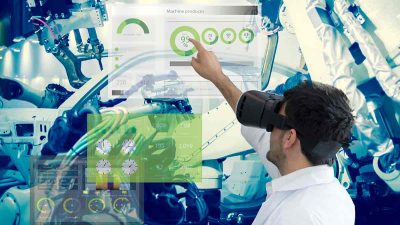Ever noticed how mentally drained you feel after using augmented reality applications for extended periods? That exhaustion represents what experts now call the “Reality Tax” – the cognitive cost we pay when navigating experiences that blend digital elements with our physical world.
The Hidden Costs of Augmented Worlds
As augmented reality becomes increasingly embedded in our daily lives, we’re only beginning to understand its impact on our cognitive resources. Unlike traditional digital experiences confined to screens, AR demands that our brains simultaneously process both physical and virtual information streams.
This dual processing requirement creates a unique form of mental fatigue. Our visual systems must constantly reconcile synthetic elements with real-world surroundings, while our attention gets divided between multiple layers of reality. The resulting mental strain often goes unnoticed until we experience the characteristic headaches, eye fatigue, or mental fog that follows extended AR sessions.
At AR Marketing Tips, we’ve observed how understanding this cognitive burden has become essential for creating effective augmented experiences. The most successful AR implementations now explicitly account for cognitive load in their design philosophy.
Measuring Cognitive Currency
How do we quantify something as subjective as mental effort? Researchers have developed several approaches to measure the cognitive load imposed by augmented experiences.
Eye-tracking studies reveal how our visual attention jumps between real and virtual elements. Increased saccade movements – the rapid shifting of focus between different points – directly correlates with higher cognitive demands. When poorly designed AR interfaces cause excessive eye movement, mental exhaustion accelerates dramatically.
Brain activity measurements offer another window into cognitive taxation. EEG readings during AR usage show distinctive patterns of heightened activity in regions responsible for visual processing, spatial reasoning, and attention management. These patterns intensify with more complex augmentations, providing a neurological signature of the Reality Tax in action.
Subjective experience scales have proven surprisingly reliable for quantifying cognitive load. By having users rate their perceived mental effort during and after AR interactions, researchers have developed standardized methods to compare the cognitive costs of different augmented experiences.
The Economy of Attention
Every augmented experience operates within what we might call a cognitive budget – the limited mental resources users can allocate before exhaustion sets in. This creates an attention economy where thoughtful design becomes the difference between sustainable engagement and cognitive bankruptcy.
Early AR applications often ignored these limitations, bombarding users with excessive information and interactive elements. The resulting cognitive overload led to quick abandonment as users instinctively avoided mentally taxing experiences.
Modern approaches recognize that user attention represents a precious and finite resource. Just as financial budgets require careful allocation, cognitive budgets demand thoughtful distribution across the elements of an augmented experience.
The most effective AR designs now operate on a principle of cognitive minimalism – delivering maximum value with minimal mental taxation. This approach treats user attention as the valuable currency it truly is, spending it only when necessary and always seeking the highest possible return on cognitive investment.
Contextual Intelligence: The New Design Frontier
Context-awareness has emerged as the critical factor in reducing AR’s cognitive burden. Systems that understand when and how to present information create significantly lower mental demands than those operating without situational intelligence.
Imagine navigating an unfamiliar city with two different AR guides. The first constantly displays information about every building you pass, regardless of your interests or needs. The second intelligently highlights only the restaurants when you’re hungry or transportation options when you’re ready to move on. The second approach dramatically reduces cognitive taxation while providing superior value.
Environmental factors also influence cognitive load in ways we’re only beginning to understand. AR experiences that might feel effortless in quiet, controlled settings can become overwhelming in noisy, dynamic environments where our perceptual systems already manage complex inputs.
Truly sophisticated AR systems now adjust their information density based on environmental complexity. By reducing augmentation when users navigate challenging physical contexts, these systems preserve cognitive resources for when they’re most needed.
Individual Differences in Cognitive Taxation
Perhaps most fascinating is how the Reality Tax varies dramatically between individuals. What represents a manageable cognitive load for one person might completely overwhelm another, creating design challenges that go far beyond traditional user experience considerations.
Cognitive capacity varies naturally among individuals, but experience also plays a crucial role. Regular AR users develop specialized neural efficiencies that reduce their cognitive taxation, similar to how experienced drivers automate many aspects of vehicle operation.
Age introduces another variable, with cognitive load typically increasing as we get older. AR systems designed for younger users often prove overwhelming for older adults unless specifically adapted to their cognitive processing patterns.
Even cultural background influences how we process augmented information. People from cultures with different reading directions, symbol systems, or visual traditions often experience varying cognitive loads from identical AR presentations.
Ethical Dimensions of Cognitive Exploitation
As our understanding of cognitive load advances, ethical questions emerge about the responsible use of augmented reality. When designers deliberately create mentally taxing experiences to capture attention or influence behavior, they enter ethically questionable territory.
Some advertising applications already exploit cognitive load to their advantage, creating disruptive AR experiences that forcibly redirect attention. These approaches effectively hijack our cognitive resources without consent, raising important questions about mental autonomy in augmented spaces.
Transparency about cognitive demands might soon become an expected ethical standard. Just as food products list their nutritional content, future AR experiences may need to disclose their anticipated cognitive cost, allowing users to make informed decisions about their mental energy expenditure.
Designing for Cognitive Sustainability
Forward-thinking designers have begun embracing cognitive sustainability as a core principle. This approach prioritizes experiences that can be maintained indefinitely without depleting mental resources or causing cognitive fatigue.
The cognitive sustainability movement emphasizes several key design principles:
Predictable interactions reduce mental load by allowing users to develop accurate mental models of how systems will behave. When augmented elements follow consistent patterns, our brains can automate their processing rather than actively interpreting each new instance.
Meaningful defaults minimize unnecessary decisions by presenting the most likely options first. Every decision point in an AR experience represents a cognitive tax assessment; thoughtful defaults reduce these taxable events.
Progressive disclosure reveals information only as needed, preventing the cognitive overwhelm that comes from excessive simultaneous presentation. By introducing complexity gradually, these systems allow users to build mental frameworks that support rather than exhaust cognitive processing.
The Future of Augmented Cognition
As AR technology advances toward more immersive and persistent experiences, understanding cognitive load becomes increasingly crucial. The coming generation of lightweight, all-day wearables will extend augmented sessions from minutes to hours, dramatically raising the stakes for cognitive sustainability.
Some researchers envision adaptive systems that continuously monitor signs of cognitive fatigue and automatically adjust their information presentation. These systems might reduce complexity when detecting increased blink rates, changes in pupil dilation, or subtle shifts in interaction patterns that signal mounting mental fatigue.
Others explore the potential for cognitive prosthetics – augmented systems specifically designed to reduce mental burden by externally handling memory, attention direction, and information processing. These technologies might particularly benefit those with cognitive limitations or impairments.
The ultimate goal lies in creating symbiotic augmented experiences – systems that work with our natural cognitive processes rather than against them. These experiences would enhance human capability without extracting a heavy Reality Tax, allowing us to leverage the benefits of augmented worlds without surrendering our mental well-being.
Understanding the cognitive load economy doesn’t just improve user experience – it fundamentally reshapes how we approach the relationship between human minds and augmented realities. As we continue advancing into augmented futures, respecting the limits of our cognitive resources will determine whether these technologies enhance or diminish our lived experience.




